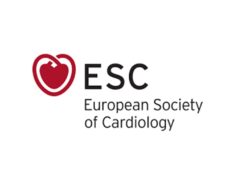
A study utilising nationwide healthcare data from across Denmark has indicated that, during catheter ablation procedures, conscious sedation (CS) may be linked to a higher risk of atrial fibrillation (AF) recurrence as compared to general anaesthesia (GA).
Writing in the journal Europace, Lise Da Riis-Vestergaard (University of Copenhagen/Herlev-and Gentofte Hospital, Denmark) and colleagues detail that—while sedation and analgesia are considered “pivotal” for patient comfort and lesion formation during catheter ablations—the impact of anaesthesia approach on AF recurrence rates “remains uncertain”.
They therefore conducted a cohort study using national data from Danish healthcare registries to examine whether or not AF recurrence rates were impacted by the selection of either CS or GA during these procedures.
The study involved adult patients undergoing first-time catheter ablation for AF from 2010–2018. Its primary endpoint was AF recurrence—defined by a composite endpoint including antiarrhythmic drug (AAD) prescriptions, AF-related hospital admissions, electrical cardioversions, or AF re-ablations.
Riis-Vestergaard and colleagues note that included patients were categorised by anaesthesia type—CS or GA—with the impact of the two approaches being evaluated using multivariable Cox proportional hazards analysis. The study cohort ultimately comprised 7,957 patients, 6,421 of whom received catheter ablation under CS and 1,536 who underwent the procedure with GA.
The investigators report that key factors including persistent AF, hypertension and heart failure, as well as AAD use, were all more prevalent in the study’s GA group than in the CS group.
However, as per the study’s primary endpoint, cumulative incidences of recurrent AF were higher in the CS group at both one year (46% vs 37%) and five years (68% vs 63%). Multivariate analyses also revealed that CS was “significantly associated” with an increased risk of AF recurrence at five-year follow-up (hazard ratio [HR], 1.26; 95% confidence interval [CI], 1.15–1.38)—with this finding being consistent across paroxysmal and persistent AF subtypes.
“This nationwide cohort study suggests a higher risk of AF recurrence with CS during catheter ablation compared to GA,” Riis-Vestergaard and colleagues conclude. “These results advocate for considering GA as the preferred anaesthesia type for improved catheter ablation outcomes.”
Following their publication in Europace, Riis-Vestergaard spoke to Cardiac Rhythm News to discuss the potential impact of operator experience with the different anaesthesia approaches.
“We acknowledge that, if an operator is comfortable and experienced with a certain anaesthesia type, it may affect the efficacy of the procedure,” she stated. “However, in this study, we did not find any interaction between anaesthesia type and centres—even though some centres used CS to a greater degree than others.”
In addition, Riis-Vestergaard commented on some of the more granular findings of the study as well as their wider implications.
“At baseline, we found that 35% of the patients with persistent AF received CS and 50% received GA. As these are observational data, we do not know the rationale for choosing one or the other,” she said. “In a clinical setting, many factors are involved when deciding [on] anaesthesia type. There are of course operator and patient preferences—but, in most countries, the available healthcare resources allocated for anaesthesia are more likely to determine the final choice.
“This study includes thermal energy ablation but, with the emerging use of pulse field ablation, the need for adequate analgesia for the procedures is growing. Evidence regarding risks and outcomes based on anaesthesia is warranted, and also for optimal resource utilisation. It is of course always important to consider individual patient factors that would advocate towards a certain anaesthesia [approach] based on risk of complications due to the anaesthesia type—for example, extreme obesity, difficult airways, or extreme anxiety.”









